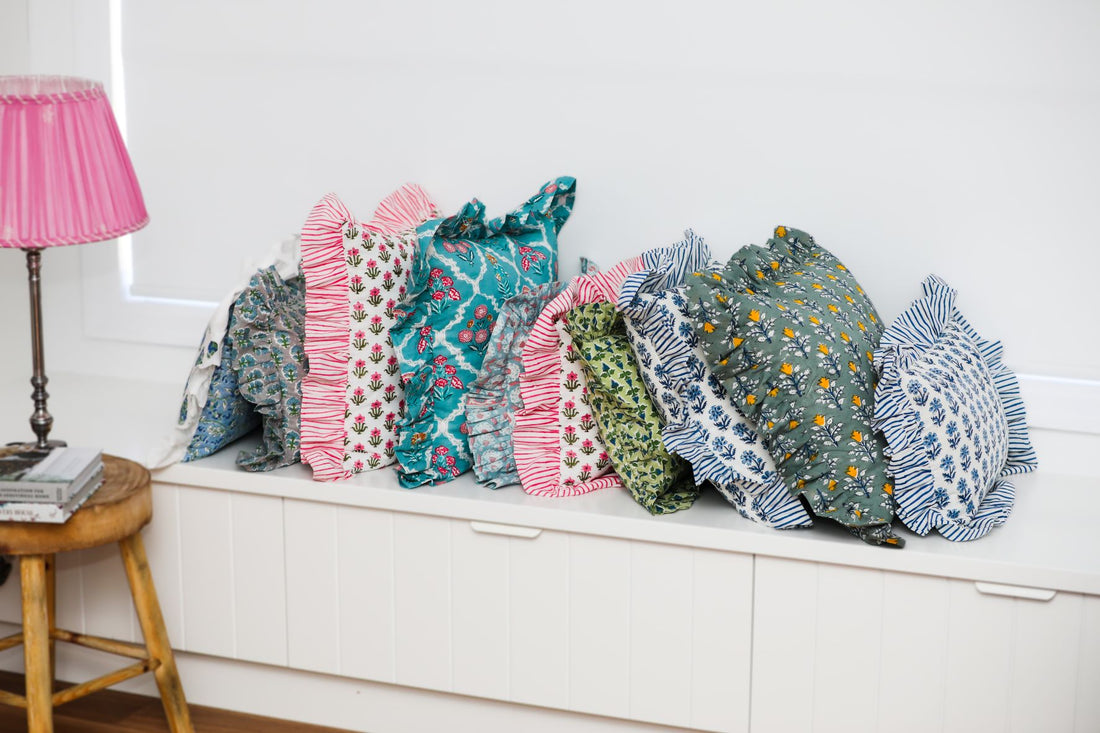
Sustainable homewares – why block printed fabric lampshades are eco-friendly.
Share
Most well-known for being Indian, block printing’s foundations actually lie in China where it was first used to print paper and textiles. After the technique was picked up by Indian artisans the slow and delicate procedure became a finely-honed craft that lives on today, centuries after its inception.
So, why is block printing eco-friendly and how can you live in a more sustainable home by choosing a block printed fabric lampshade?
What is block printing?
Block printing is a process completed by hand in five steps:
- Pre-washing the fabric
- Preparing the blocks
- Dyeing the fabric
- Printing and washing the fabric
- Quality control
Along the way, measures are taken to ensure this practice remains environmentally viable. For example, excessive amounts of water are not used to pre-wash and wash the fabric, and instead local water is used at the source. The entire process is undertaken carefully and precisely by hand, with the utmost attention to detail applied to ensure consistency in the printing.
Does block printing leave a carbon footprint?
No. Block printing does not use any electricity and all of the fabrics we use are hand-stamped using wood blocks, meaning no machinery is used. The pre-washing and washing of the fabrics is all done by hand, too. Wet, dyed and printed fabrics are all left to dry naturally under the sun’s heat – not through heat manufactured by a dryer – thereby leaving zero carbon emissions. It really is one of the most sustainable practices remaining in fashion and interiors.
Why are Pip & Haze block printed products better for the environment?
Our block printed fabric shades, cushions and tablecloths are all made using the sustainable process outlined above. Instead of mass-produced, machine-printed fabrics the block printed varieties are a unique labour of love and craftsmanship. By investing in high quality products like these you are supporting a trade that has a much lower impact on the environment not only through production, but because they will stand the test of time and be in your home – not landfill - for many years to come.
